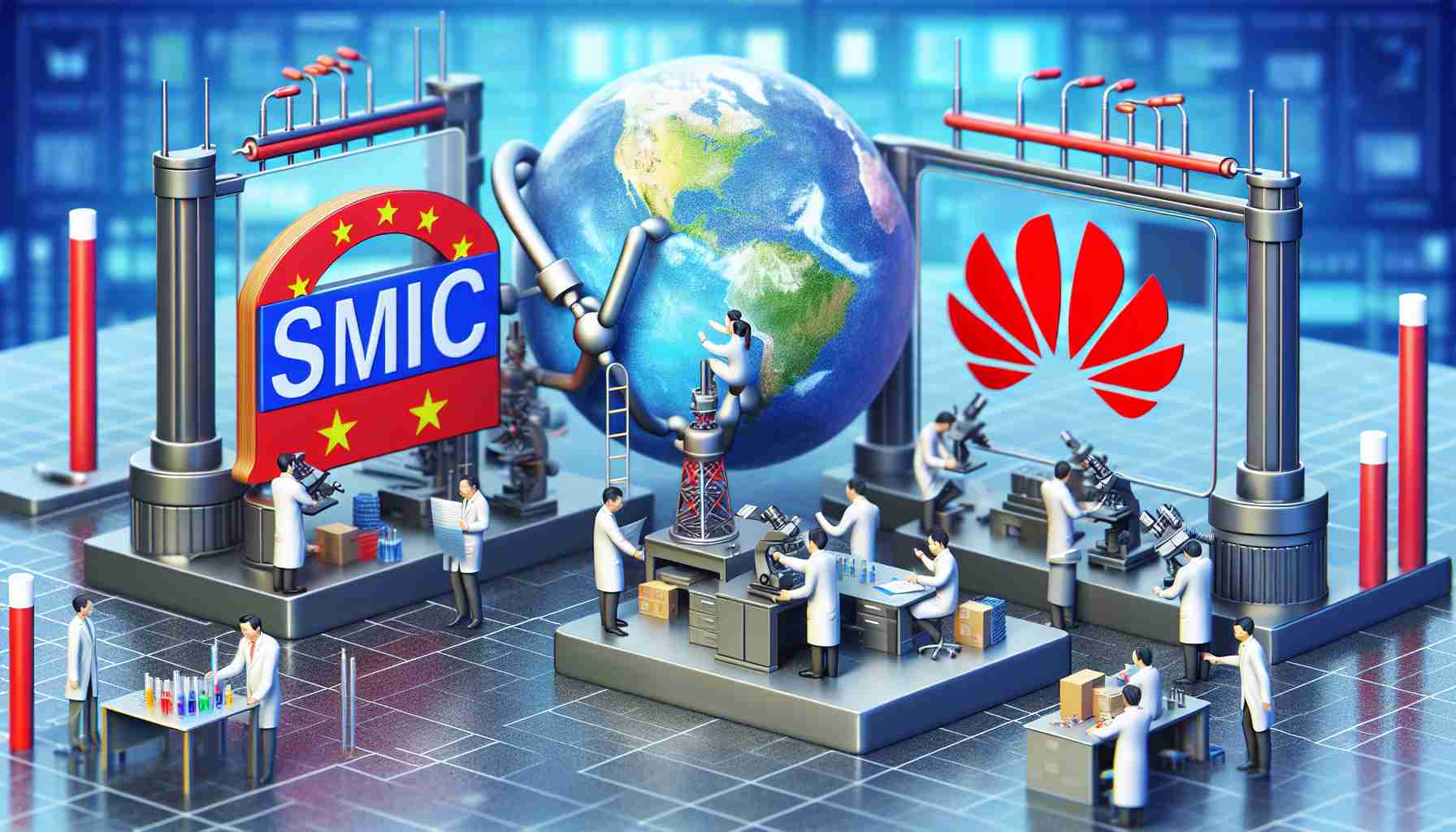China remains committed to advancing its semiconductor industry despite facing US sanctions, as evidenced by the government funding received by Semiconductor Manufacturing International Corp (SMIC) and Huawei Technologies. Despite being blacklisted on the US Entity List, both companies successfully produced a 7 nanometer 5G chip called Kirin 9000S by repurposing older manufacturing equipment. This breakthrough enabled Huawei to introduce the chip in their flagship Mate 60 Pro smartphone, propelling the company to the top of the Chinese smartphone sales charts earlier this year.
The focus on semiconductor development in China is further exemplified by Shanghai, where 16 out of 191 government-subsidized projects are related to the semiconductor industry. These projects include SMIC’s two 300nm production lines and a Huawei research center in the Qingpu district. The upcoming Qingpu facility aims to hire an impressive 35,000 researchers upon its opening in June, with a primary focus on chip research and development.
In addition to SMIC and Huawei, Advanced Micro-Fabrication Equipment, a company specializing in etching equipment, has also received funding from the Shanghai government. Moreover, sources have indicated that SMIC and Huawei are striving to manufacture a 5nm chip as early as this year. The development of these chips, designed by Huawei’s HiSilicon, is crucial for the production of next-generation Kirin processors and potential integration into Huawei’s Ascend AI chips.
However, the challenges faced by SMIC are evident. The use of older-generation manufacturing equipment has resulted in lower yields, reaching less than one-third of Taiwan’s TSMC. Consequently, SMIC had to charge customers a higher price, around 40 to 50 percent more, for products with 5nm and 7nm nodes compared to TSMC. Despite these setbacks, Huawei remains optimistic, with plans to upgrade its Kirin and Ascend chips with the 5nm technology.
China’s commitment to advancing its semiconductor industry showcases its determination to reduce reliance on foreign hardware. By investing in key players like SMIC and Huawei, the country aims to enhance its domestic chip manufacturing capabilities and develop its own cutting-edge technologies. The ongoing development in the semiconductor sector in China will likely have significant implications for the global tech landscape in the years to come.
FAQ Section
1. What are some examples of Chinese companies advancing in the semiconductor industry despite US sanctions?
Both Semiconductor Manufacturing International Corp (SMIC) and Huawei Technologies have received government funding and successfully developed a 7 nanometer 5G chip called Kirin 9000S. Huawei has introduced this chip in their flagship Mate 60 Pro smartphone.
2. How is Shanghai contributing to semiconductor development in China?
Shanghai has 16 government-subsidized projects related to the semiconductor industry, including SMIC’s production lines and a Huawei research center. The upcoming Qingpu facility will hire 35,000 researchers focused on chip research and development.
3. Apart from SMIC and Huawei, are there other companies receiving funding?
Advanced Micro-Fabrication Equipment, a company specializing in etching equipment, has also received funding from the Shanghai government.
4. What is the goal of manufacturing a 5nm chip?
SMIC and Huawei are striving to manufacture a 5nm chip as early as this year. These chips, designed by Huawei’s HiSilicon, are crucial for the production of next-generation Kirin processors and potential integration into Huawei’s Ascend AI chips.
5. What challenges does SMIC face in its semiconductor development?
SMIC faces challenges in manufacturing with older-generation equipment, resulting in lower yields compared to Taiwan’s TSMC. This has led to higher prices for SMIC products with 5nm and 7nm nodes, around 40 to 50 percent more than TSMC.
Definitions
1. Semiconductor: A solid material that has electrical conductivity between that of a conductor and an insulator, and its conductivity can be controlled through the application of an electric field, giving it the ability to amplify or switch electronic signals.
2. Entity List: A list maintained by the US government that identifies foreign parties (individuals, organizations, companies) that are subject to specific export control restrictions due to their involvement in activities that are contrary to US national security or foreign policy interests.
3. Nanometer (nm): A unit of length equal to one billionth of a meter. It is often used in the context of semiconductor manufacturing to indicate the size of features on a chip.
4. HiSilicon: A semiconductor company owned by Huawei Technologies that designs and manufactures chips for Huawei’s consumer electronics products, including smartphones and AI chips.
Related Links
1. SMIC official website
2. Huawei official website
3. Shanghai municipal government official website
The source of the article is from the blog maestropasta.cz
